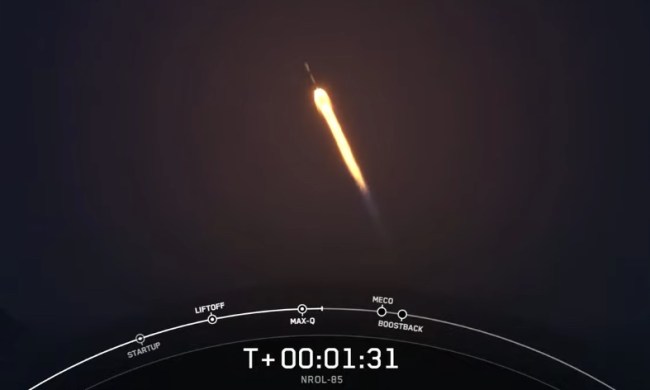Update: While the launch went well — and the Dragon capsule is now winging its way to the ISS — the same can’t be said about the landing. A malfunction with the hydraulic system caused the Falcon 9 booster to spin and tilt as it descended. This resulted in it going off target and landing in the Atlantic Ocean.
“Engines stabilized rocket spin just in time, enabling an intact landing in water! Ships en route to rescue Falcon,” Elon Musk wrote in one tweet. In another, he noted that, “Grid fin hydraulic pump stalled, so Falcon landed just out to sea. Appears to be undamaged & is transmitting data.”
Tracking shot of Falcon water landing pic.twitter.com/6Hv2aZhLjM
— Elon Musk (@elonmusk) December 5, 2018
SpaceX can never be accused of loitering. Two days after its most recent launch, the company is set to launch one of its Falcon 9 rockets today from Cape Canaveral. Provided that everything goes to plan, the CRS-16 mission launch will take place at 1:16 p.m. ET /10:16 a.m. PT.
The launch is a resupply mission for the International Space Station (ISS). This is SpaceX’s sixteenth such operational mission, after NASA awarded it the contract to resupply the ISS through 2024. The Dragon capsule carried by the Falcon 9 rocket in today’s launch comprises a payload of 250 science experiments — related to such fields as genomics, cellular biology, botany, immunology, and more. It also contains assorted hardware and replenishable goods.
Today’s launch was originally scheduled to take place on Tuesday, December 4. However, it was delayed after some of the goods on board were found to be in, well, not quite the pleasant condition that might have been hoped for. As a NASA representative explained on the space agency’s official blog: “The launch was moved to Wednesday after mold was found on food bars for a rodent investigation prior to handover to SpaceX. Teams will use the extra day to replace the food bars.”
Dragon is SpaceX’s reusable cargo spacecraft. When it made its maiden flight in December 2010, it became the first commercially built and operated spacecraft successfully recovered from orbit. This latest launch will be the fifth time SpaceX has reused a Dragon capsule which has already been to orbit. This specific Dragon capsule was launched in February 2017, and re-entered Earth’s atmosphere one month later in March 2017.
The 2,200 pound payload carried by Dragon will take two days to reach the ISS. Once it arrives, a trio of astronauts will assist with docking the Dragon cargo ship. This will be done using the station’s 58-foot robotic arm, which will attach the Dragon spacecraft to the orbiting laboratory. The Dragon cargo spacecraft will return to Earth in early 2019, following an approximately five-week stay on the ISS.
As ever, if you’re interested in following today’s SpaceX launch, there’s the opportunity to tune in and watch it live. This can be done via webcast at this link. Should today’s launch fail to take place, another backup launch opportunity is available on Friday, December 7.


